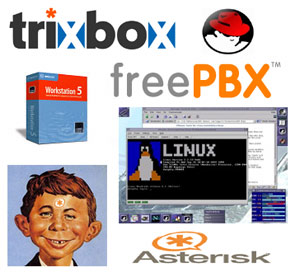Introducing Version 3 of the Plug-and-Play Asterisk IP PBX for Windows
Third Time’s the Charm! The ultimate (free) Asterisk PBX for your Windows Desktop just keeps getting better. Version 3 of nv-trixbox adds the latest patches to Asterisk and the latest freePBX build in addition to the usual Nerd Vittles application smorgasbord. Enjoy!







 JUST RELEASED: Visit the Incredible PBX Wiki
JUST RELEASED: Visit the Incredible PBX Wiki
